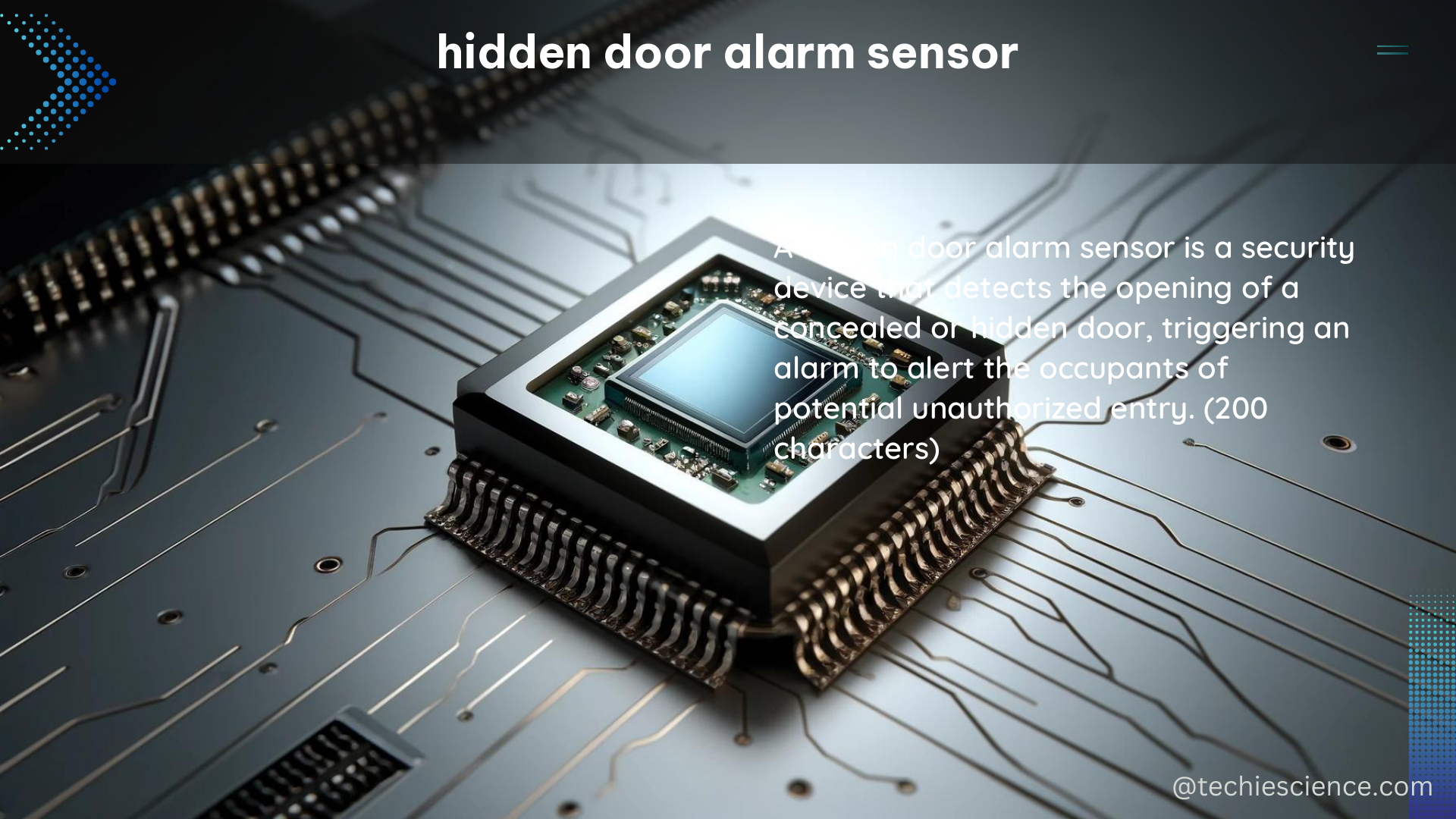The hidden door alarm sensor is a crucial component of any comprehensive security system, designed to detect unauthorized access through concealed doors or passages. These sensors are typically binary devices that can be covertly activated by personnel to signal an alarm condition to an Intrusion Detection System (IDS), providing an essential layer of protection for sensitive areas.
Understanding the Technical Aspects of Hidden Door Alarm Sensors
From a technical standpoint, hidden door alarm sensors can be classified as part of a broader category of detection measures, which include Detection Systems, Assessment Systems, and Access Control System elements. These sensors are designed to detect intruders, weapons, or explosives and assist in assessing the validity of detection. They also control access to protected areas and communicate the appropriate information to the response force.
Sensor Sensitivity, Specificity, and False Alarm Rate
In terms of measurable and quantifiable data, hidden door alarm sensors can be evaluated based on their sensitivity, specificity, and false alarm rate. Sensitivity refers to the sensor’s ability to correctly detect an intrusion, while specificity measures the sensor’s ability to correctly ignore non-intrusion events. The false alarm rate is the percentage of non-intrusion events that the sensor incorrectly identifies as intrusions.
For example, a hidden door alarm sensor with a sensitivity of 95% would correctly detect 95 out of 100 intrusion events, while a specificity of 90% would correctly ignore 90 out of 100 non-intrusion events. A false alarm rate of 5% would mean that 5 out of 100 non-intrusion events are incorrectly identified as intrusions.
It’s important to note that the sensitivity, specificity, and false alarm rate of hidden door alarm sensors can be influenced by various factors, such as the sensor’s placement, the environment in which it is used, and the specific intrusion scenario being detected. Therefore, it’s essential to consider these factors when evaluating the performance of these sensors.
Sensor Technologies and Capabilities
Hidden door alarm sensors can utilize a variety of technologies to detect unauthorized access, including:
- Magnetic Switches: These sensors detect the opening or closing of a hidden door by monitoring changes in the magnetic field.
- Pressure Mats: Pressure-sensitive mats placed in front of a hidden door can detect the weight of an intruder.
- Infrared Beams: Invisible infrared beams can be used to detect the presence of an intruder passing through a hidden doorway.
- Vibration Sensors: These sensors can detect the vibrations caused by the movement of a hidden door.
- Fiber Optic Sensors: Fiber optic cables can be used to detect the disturbance of light caused by the opening or closing of a hidden door.
Each of these technologies has its own strengths and weaknesses, and the choice of sensor will depend on the specific requirements of the application, such as the size and complexity of the hidden door, the environment, and the desired level of security.
Installation and Maintenance Considerations

In addition to the technical specifications of hidden door alarm sensors, their ease of installation and maintenance requirements are also important factors to consider. These factors can vary depending on the specific sensor technology being used and the complexity of the hidden door or passage being monitored.
Ease of Installation
The installation of hidden door alarm sensors can range from relatively simple to highly complex, depending on the sensor type and the specific application. Some sensors, such as magnetic switches, may be easy to install, while others, like fiber optic sensors, may require more specialized expertise and equipment.
Maintenance Requirements
The maintenance requirements for hidden door alarm sensors can also vary significantly. Some sensors may require regular inspections, calibration, or battery replacements, while others may be more low-maintenance. It’s essential to consider the long-term maintenance costs and the availability of technical support when selecting a hidden door alarm sensor.
Cost Considerations
The cost of hidden door alarm sensors can also be an important factor in the selection process. Sensor prices can range from relatively affordable to highly expensive, depending on the technology, features, and level of customization required. It’s essential to balance the cost with the required level of security and the overall budget for the security system.
Conclusion
Hidden door alarm sensors are a critical component of any comprehensive security system, providing a crucial layer of protection against unauthorized access through concealed doors or passages. By understanding the technical aspects, installation and maintenance considerations, and cost factors, security professionals can select the most appropriate hidden door alarm sensor for their specific needs, ensuring the highest level of protection for sensitive areas.
References:
- Appendix D – Glossary | Security 101: A Physical Security Primer for Policymakers. (2017). National Academies Press.
- Instruction Manual 262-12-001-01 DHS Lexicon Terms and Definitions. (2017). Department of Homeland Security.
- Transit Asset Management Systems Handbook. (2020). Federal Transit Administration.

The lambdageeks.com Core SME Team is a group of experienced subject matter experts from diverse scientific and technical fields including Physics, Chemistry, Technology,Electronics & Electrical Engineering, Automotive, Mechanical Engineering. Our team collaborates to create high-quality, well-researched articles on a wide range of science and technology topics for the lambdageeks.com website.
All Our Senior SME are having more than 7 Years of experience in the respective fields . They are either Working Industry Professionals or assocaited With different Universities. Refer Our Authors Page to get to know About our Core SMEs.